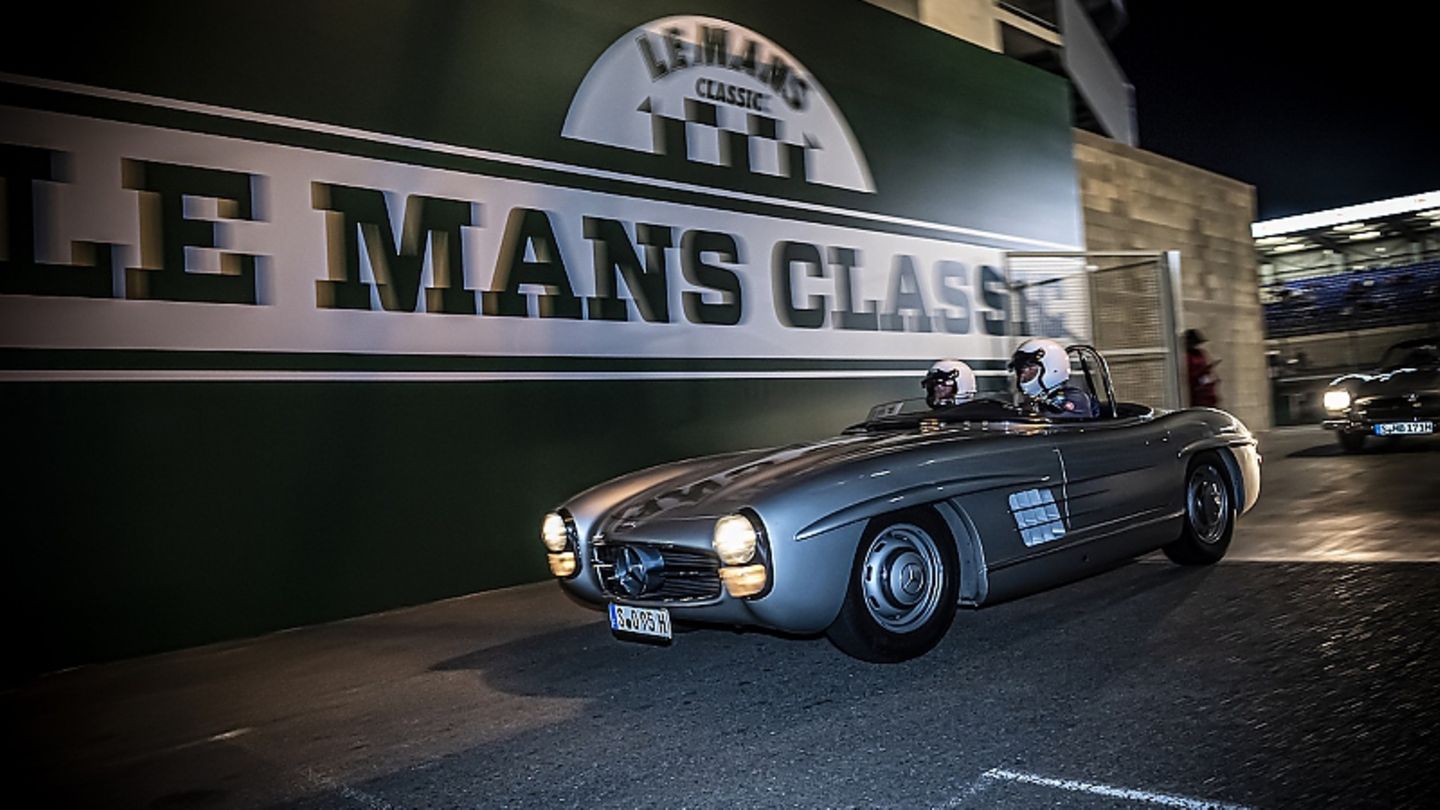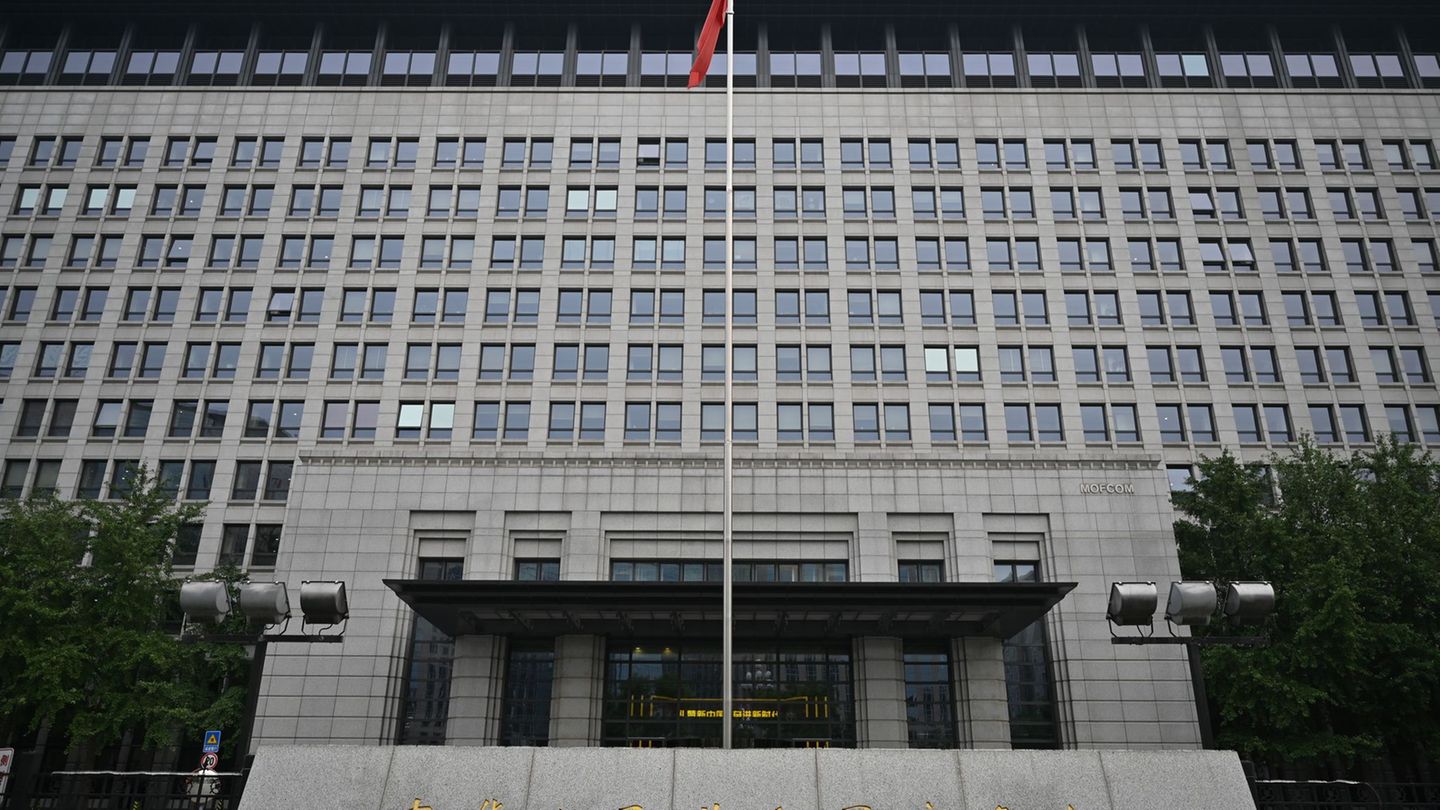The Le Mans racetrack has been a living legend for seven decades, and not just in motorsport. What could be more spectacular than plowing through the 13-kilometer Sarthe course at night in a 1957 Mercedes 300 SLS?
As if the Mercedes 300 SL as a gullwing or roadster wasn’t grandiose enough – it could be a whole lot sharper. It should be a real racing car for the thunderous night trip on the Le Mans race course. The Mercedes 300 SLS O’Shea is a true rarity, of which there were only two models. The open racing version of the 300, named after racing driver Paul O’Shea, is based on the cool 300 roadster, but has been extensively modified for successful use on the circuit. So it not only lacks the roof, but also the windshield. A short wind lip is intended to protect the driver from the worst environmental influences, as is the bracket behind the well-contoured sports seat. In addition, bumpers and various comfort details of the rolling star legend are missing. Instead of the usual 1.3 tons, the Mercedes 300 SLS O’Shea weighs just 970 kilograms – together with the power increase to 173 kW / 235 hp instead of the usual 158 kW / 215 hp, perfect extras for an incomparable French night .
It is still pleasantly warm in Le Mans just before 1 a.m. at night. The thermometer on the race track reads around 20 degrees Celsius and the tension and the floodlights in the pit lane area take care of the rest. Le Mans – that is not only a legend among car fans and who better to explore one of the most dangerous high-speed circuits in the world with than in a stripped 300 SLS, which so shamelessly blows the trumpet sound of its straight six-cylinder out of the side pipes? Even at a moderate pace to the racetrack, the driver behind the wheel is blown through vigorously, because the narrow racing windscreen together with the cockpit cover with air inlet slot ensures that it blows more strongly into your mouth and eyes. Okay, so pull up the balaclava and tilt your gaze slightly so that the thin plastic lip on the top edge of the helmet protects your eyes better than it should. Untinted racing glasses would be just the right thing at night, because after all, it’s not just the Porsche curves that get down to business quickly and the long Hunaudieres straight in particular could cause a few problems at high speeds. But pulse and adrenaline rise – why care about the headwind? Barely out of the area of the pits, however, in the upper speed range of the second gear it is already quite draughty for the eyes and face as it goes up the slight incline to the Dunlop arch. The light from the grandstands and pits has almost disappeared in a fraction of a second and only now do you notice the dim headlights of the 1957 racing car. It’s no surprise that they don’t shed much light on the road and it doesn’t take long before you miss the first braking point in the Dunlop chicane. It doesn’t look any better at the crest just behind it.
The flashing LED signs to the left and right of the route are much brighter than the high beam, which was switched on long ago with the left foot switch. Things are looking better in the Esses and in the slow Tertre Rouge switchback – more light, knowledge of the route in the back of your mind and the slower speed make it easier to approach the almost six-kilometre-long Hunaudieres straight. Here, as if at the push of a button, it becomes pitch-dark again and the Mercedes 300 SLS, once driven so skilfully by Paul O-Shea, is now finding its way through the night south of Le Mans in a much less expert manner. Second gear, third up to over 5,000 tours and then into fourth – the car roars through the silent night – what a feeling. Take a deep breath, just like the racing drivers who raced through the night at the 24-hour race in Le Mans three weeks ago in their LMP cars – with up to 1,000 hp and gleaming bright LED eyes watching the endless straight along with their two subsequently added baffles, illuminate much better than the 300’s twinkle tealights do. The speedometer shows something of 170 km/h with insufficient illumination. The display goes up to 270 km/h and with this maximum figure is far below the 340 km/h that the fastest cars deliver at racing speed on the Sarthe circuit. Once even more than 400 km/h were driven here – why does that come to mind now?
It goes on – largely unlit towards the Mulsanne curve – just as legendary as most of the sections of the high-speed circuit in western France. When braking hard, the rear becomes light and the chill of the night slowly creeps in, causing the asphalt to cool slightly and become slightly damp. Short counter-steering and it goes in the direction of the Indianapolis and Arnage curves. Brake again, first steer slightly to the right, then harder to the left and again it’s hard to hit one of the apexes in the dark. A little too much robbed over the curbs and further on the last part of the more than 13 km long slope. The Porsche curves are faster and easier to drive than expected before heading back into the pit lane after the final Ford chicane. Take a deep breath – what a ride – at night in Le Mans – in July. Preferably again, two or three more laps – faster than this one, where you first had to get used to the car and the poor light conditions.
The silver 300 SLS is apparently far less impressed than its driver by the brisk but not fast lap. In the second half of the 1950s, under Paul O’Shea, the 235 hp bolide made a name for itself, particularly on racetracks in the USA, and won many races and championships. That would be just the thing for a historic long-distance race here in Le Mans – with a little more light, if you like. And maybe next time a whole night. Who doesn’t dream of that?
Source: Stern
I am a 24-year-old writer and journalist who has been working in the news industry for the past two years. I write primarily about market news, so if you’re looking for insights into what’s going on in the stock market or economic indicators, you’ve come to the right place. I also dabble in writing articles on lifestyle trends and pop culture news.




